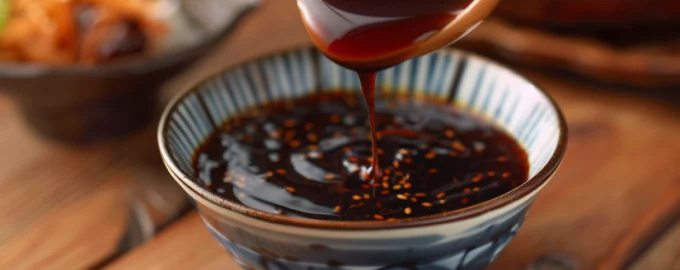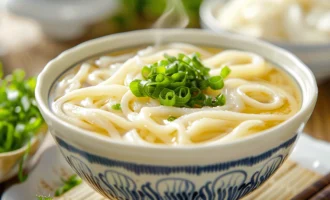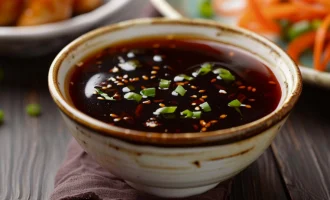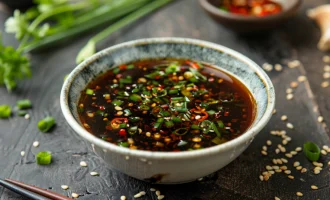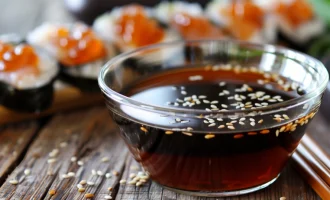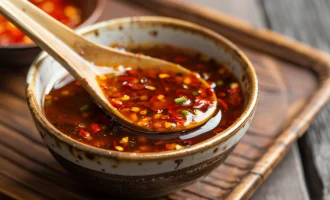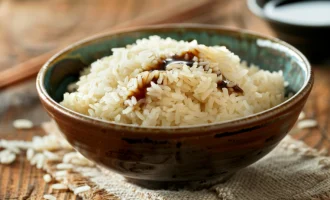Teriyaki sauce is a traditional Japanese sauce that dates back to the 17th century. The term “teriyaki” derives from the noun “teri,” which refers to the shine or luster given by the sugar content in the sauce, and “yaki,” which means the method of cooking by grilling or broiling. This sauce is widely used in Japanese cuisine to marinate and glaze various types of meat, particularly chicken, beef, and fish, enhancing their flavor and giving them a distinctive glossy appearance. It’s also popular in fusion and international dishes, showcasing the adaptability of Japanese flavors.
- Soy Sauce 120 g
- Mirin (Sweet Japanese Rice Wine) 60 g
- Sake (Japanese Rice Wine) 60 g
- Sugar 50 g
- Fresh Ginger 10 g
- Garlic 5 g
- In a small saucepan, combine soy sauce, mirin, sake, and sugar. Stir the mixture over low heat until the sugar dissolves completely.
- Add the grated ginger and minced garlic to the saucepan. Stir well to integrate the flavors.
- Increase the heat to medium and allow the sauce to simmer gently. Stir occasionally and cook until the sauce reduces by about one-third, which should take around 10 minutes. The sauce will thicken slightly and become more concentrated in flavor.
- Remove the sauce from heat and let it cool to room temperature. Once cooled, strain the sauce through a fine sieve to remove the ginger and garlic pieces, leaving a smooth sauce.
- The teriyaki sauce is now ready to use as a marinade, glaze, or dipping sauce. If storing, transfer to a clean, airtight container.
Storage Tips
- Refrigeration: Store teriyaki sauce in an airtight container in the refrigerator for up to a month.
- Freezing: For longer storage, teriyaki sauce can be frozen. Pour it into ice cube trays, freeze, and then transfer the cubes to a freezer bag. Use within 3 months for best quality.
Useful Properties of Soy Sauce
Soy sauce, a fundamental ingredient in teriyaki sauce, is rich in several nutrients, including protein, manganese, and selenium. It also contains antioxidants, which can contribute to overall health. However, soy sauce is high in sodium, so it should be consumed in moderation.
Interesting Facts
- Cultural Fusion: Teriyaki sauce has been adopted and adapted by various cuisines around the world, particularly in the United States, where it’s used in burgers, tacos, and even pizzas.
- Versatility: Beyond meat, teriyaki sauce is also used as a seasoning for vegetables and tofu, showcasing its versatility in cooking.
Other Japanese Sauces
- Japanese Rice Sauce: Often a simple mix of rice vinegar, sugar, and salt, used to season sushi rice.
- Japanese Sauce for Meat: Apart from teriyaki, other sauces like Yakiniku sauce (used for grilled meats) and Tonkatsu sauce (a thicker sauce for breaded and fried meats) are popular in Japanese cuisine.
This recipe provides a basic yet authentic approach to making teriyaki sauce at home, offering a glimpse into the rich culinary traditions of Japan. Enjoy experimenting with it in various dishes to discover the full range of its possibilities!

